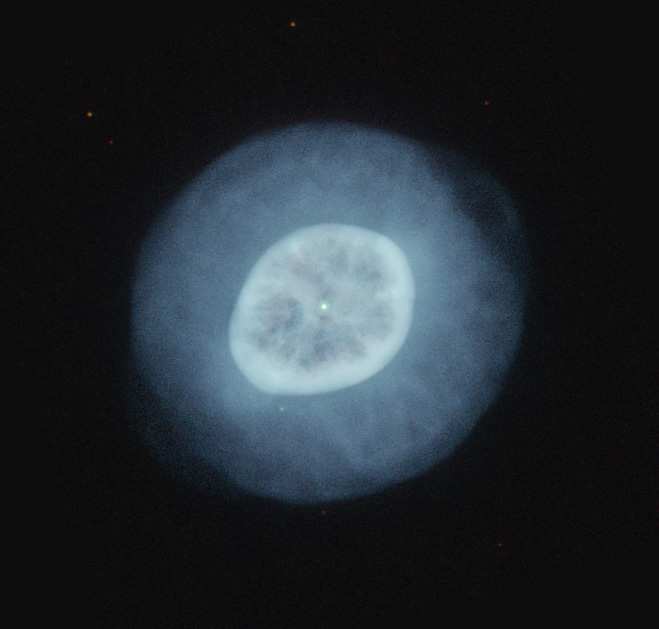
IC 2448 (2013)
If you look at enough planetary nebulas you know they like to be random and avoid fitting comfortably into categories. One feature, however, seems rather common—a bright central core with sharply defined edges surrounded by another layer which is roughly half as bright and less sharply defined. Interesting, reticulated patterns can be seen in both layers and they are usually roughly elliptical in shape if not perfectly circular. IC 2448 is a typical example. It seems to lack FLIERs, however. (I only recently realized FLIERs is an acronym. Fliers as a rather simple noun seems to fit them even without the complexity of an acronym.)
Corners are discreetly missing data.
Red: hst_11122_03_wfpc2_f656n_pc_sci + hst_06119_49_wfpc2_f814w_pc_sci
Green: hst_06119_49_wfpc2_f555w_pc_sci
Blue: hst_08390_14_wfpc2_f502n_pc_sci
North is up.
Copyright information:
Hubble data is public domain, but I put a lot of work into combining it into beautiful color images. The minimal credit line should read: NASA / ESA / J. Schmidt

This work is licensed under a Creative Commons Attribution 3.0 Unported License.


